In this post, we will discuss the meaning of "first cousin once-removed". Plus, learn how to figure out how many degrees removed you are from your cousins, and see examples of cousins-removed.
In some families, cousins are just cousins. In genealogy, however, we like to get specific since the exact nature of a cousin relationship can be extremely important.
For example, in genetic genealogy, we know that different "types" of cousins share different amounts of DNA with each other. This is one reason why it can be important to be able to calculate the exact way we are related to our relatives.
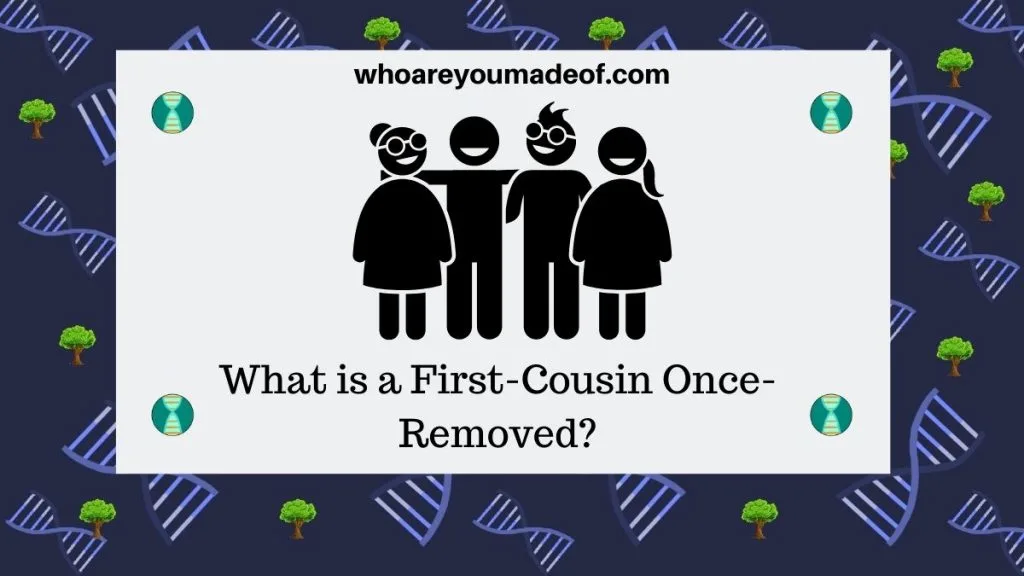
Even though calculating the relationship is important, it can also be confusing. Keeping track of the common ancestor, generations removed, and just knowing exactly how a cousin is related to you can be frustrating.
It's not as hard as it seems at first glance, however. With a little practice and the information that you will learn in this article, you will become an expert on cousin relationships in your family.
What is a first cousin?
A first cousin is the child of a sibling of one of your parents. That is the cousin relationship that we are all most familiar with, and we must understand the definition of a first cousin before we can learn about a first cousin once-removed.
Most people are familiar with first cousins, and may even have close relationships with them. It's easy to remember these cousins, after all, since they share grandparents with you.
Their parents are siblings to your parents, after all. You may have even grown up seeing your first cousins at your grandparents' house for holiday gatherings.
It's obvious that the children of our first cousins are related to us, but how do we describe that relationship? Are they second cousins?
This is one of the most common mistakes that people make when it comes to describing cousin relationships. The children of our first cousins are not our second cousins.
First cousin once-removed explanation
A first cousin once-removed is the child of one of your first cousins. Or the first cousin of one of your parents.
The "once-removed" comes from the fact that one of you is one generation further away from the common ancestor than the other one.
If two cousins are of the same generation (i.e. the same number of generations away from the most recent common ancestor), then they are just "first" cousins (or third, fourth, or fifth!). Once there is a generational difference between two cousins, then the cousin is "removed".
Degrees of cousin relationships
It gets a little more confusing when you start to add more generations between you and your cousin's Most Recent Common Ancestor (MRCA).
In the graphic below, the "kids" are all first cousins.
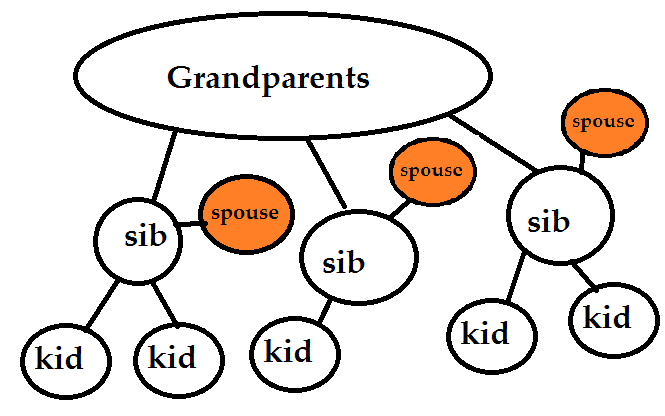
A second cousin, for example, is when your MRCA is your great-grandparents. A third cousin is when your MRCA is your great-great grandparents.
These are called "degrees" of cousins.
A quick rule is just to add "1" to the number of greats to figure out the cousin degree. For example:
- If you share great-grandparents, you are 2nd cousins (1 great +1 = 2)
- If you share great-great grandparents, you are 3rd cousins (2 greats +1=3)
- If you share great-great-great grandparents, you are 4th cousins (3 greats + 1 = 4)
And so on, and so on, forever!
In the graphic below, Bob and Jo are second cousins, since they are both great-grandchildren of Bob and Maria.
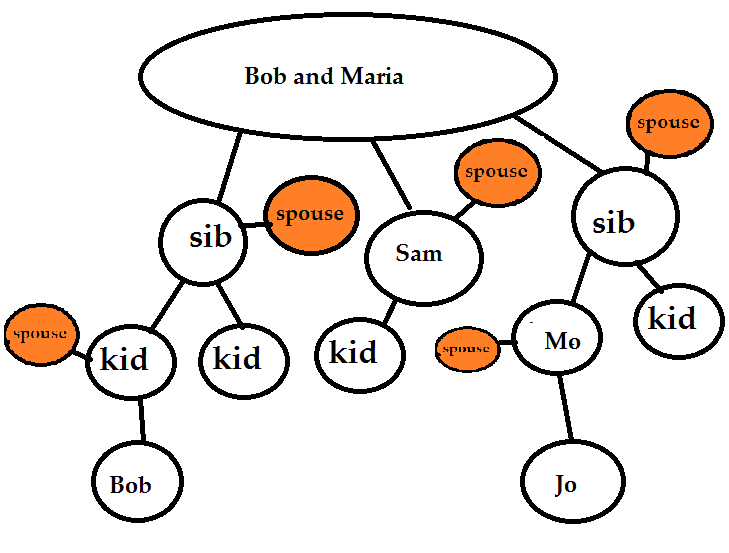
If Bob and Jo each get married (to someone else, of course!) and have children, their children will be 3rd cousins to each other. You can see a visual example of this in the next graphic below.
What does generations removed mean?
It's relatively easy to understand degrees of cousins, but what about when two cousins are not in the same generation? This is when you hear "once removed" or "three times removed", or any number of generations removed.
This is usually where people get lost. Keeping track of the degrees of cousin-ness is hard enough!
Fortunately, it's not really that complicated. There is an easy way to figure out how many generations removed you are from your cousin, no matter what "degree" of cousin they are.
How to Figure out the Generations Removed?
Remember that the degree of cousins starts with the cousin that is closest to the MRCA. Then, you count how many generations they are away from the other cousin to get the generations removed (i.e. the difference in their generations).
Take this graphic for example:
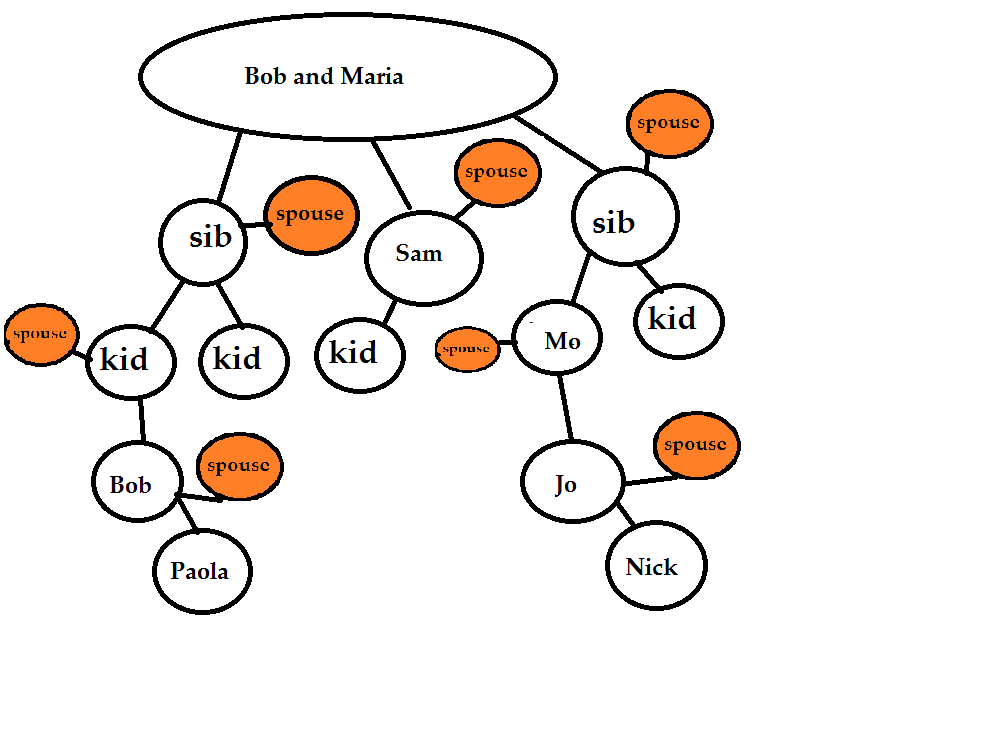
These are some cousin relationships, along with explanations, from the family depicted in the graphic:
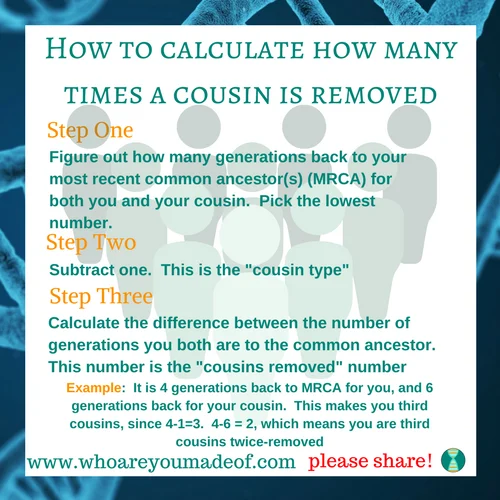
Example #1
Paola and Jo are 2nd cousins once-removed. To calculate this, we need to figure out first that Jo is the family member who is the closest to the Most Recent Common Ancestor (Bob and Maria).
Bob and Maria are Jo's great-grandparents, so we will add "1" to the great and say they are 2nd cousins. She is one generation away from Paola - in other words, once-removed, which together is 2nd cousins once-removed.
Example #2
Paloa and Sam are first-cousins three-times removed. This is because Sam is only one generation away from Bob and Maria (first cousins) and he is three generations away from Paola.
Real Life Examples of Cousins Generations Removed
Most of the time when we hear "removed", we hear it in the context of first or second cousins once or twice removed. It's true that these are the most commonly discussed, since these are the cousins-removed that we are most likely to know.
Did you know that we also have cousins many times removed? For example, we can have a first cousins three or four times-removed, or even a fifth cousin six times-removed.
Most of these cousins many times-removed have long since passed away, since they were cousins to our more distant ancestors.
Even so, it is possible to have a first or second cousin - living - and two or three times removed. Many of us do, even if we don't know them personally and are not aware of their existence.
Example of first cousin twice-removed
I was recently in contact with a Dutch relative. His grandfather was the youngest brother of my great-great grandfather (b. 1863!).
This makes us 1st cousins twice removed.
It was really neat to get in touch with him, as his grandfather stayed in Holland and my great-grandfather came to US. I had always wondered about the branches of the family that stayed behind - and he had always wondered about the branches of the family that came to the US.
He had letters that my great-grandfather's sister, who I remember meeting as a child, had written to him from Chicago. It was a cool experience to talk about that.
Example of first cousin three times removed
The second example is a relative of mine who recently passed away. She was 92 years old, and was the granddaughter of my great-great-great grandmother (b. 1861!).
I thought that this was especially fascinating, since she remembered stories about her grandparents. There is nothing more amazing than speaking with someone who can tell you a personal story about an ancestor born 160 years ago.
She was my first-cousin three-times removed. This is because she was the grandchild of our MRCA, but was three generations removed from me.
Is it too much work to do all of that calculating? I agree! That's why I prefer to use this "cousin relationship calculator". It's free and easy - just my style.
Seriously - it's an easy way to skip all of the calculating in this article and just get the information you want. Even so, I do recommend developing a basic understanding of the topic.
Shared DNA, cousins, and generations removed
For each degree and generation removed two cousins share with each other, they will also share less DNA.
If you have a cousin match who doesn't seem to fit in the typical range, it could be a cousin who is a generation or two removed - especially when it is a 1st or 2nd cousin, as those ranges are relatively set.
Haven't taken a DNA test yet? Read my post about the "Ultimate DNA Testing Strategy" to learn the best DNA test to take and some really cool ways to get the most out of that DNA test.
Easy way to figure out how your cousins are related
If you have a family tree on Ancestry, the website will automatically calculate your relationship to your family members. Once you have put everyone into your tree, all you have to do is visit their profile and it will tell you exactly how you are related.
If you don't yet have a tree on Ancestry, why not start building one today? It's free to get started (actually, it's ALWAYS free), but if you want access to their millions of documents and records, you do need to have a subscription.
Conclusion
Does my explanation make sense? Did it leave you with more questions? Have you encountered any wild cousins-removed relationships? Let me know in the comments!
Thanks for stopping by.
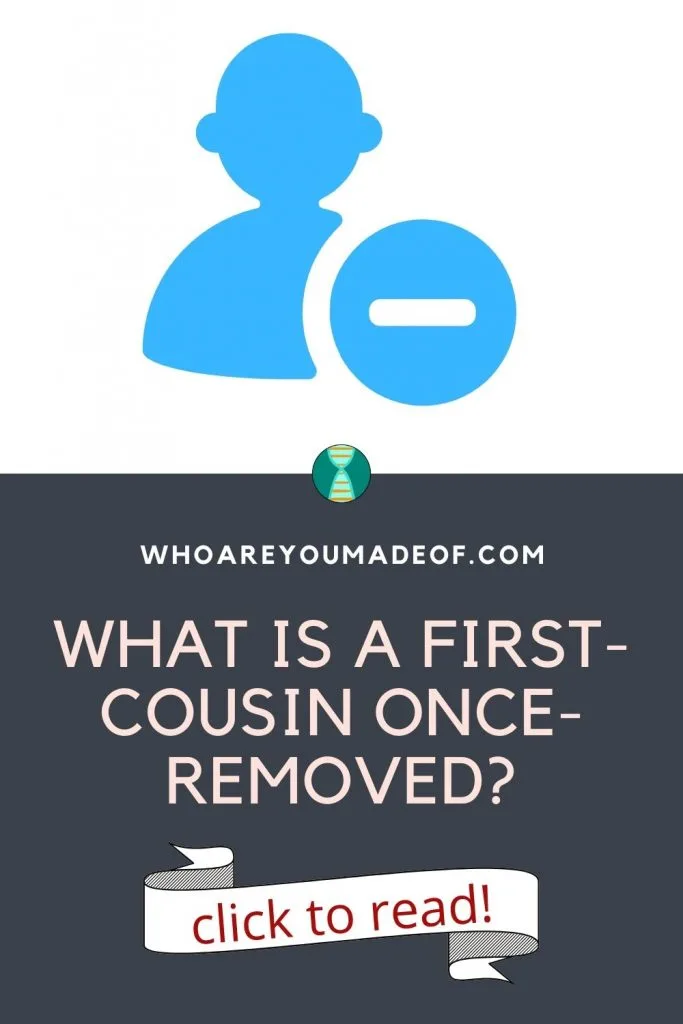

Susan M
Monday 19th of May 2025
My daughter has a cousin once removed (her father's first cousin, their moms are siblings). What is that cousin to my daughter's children. Her dad's grandsons? This actually came up this weekend, and I didn't know how to answer it, and haven't really seen this example. My grandsons would be great great grandsons of the common grandparents in question. For the cousin and my daughter's father, they were their grandparents.
Thank you!!
Mercedes
Sunday 25th of May 2025
Hi Susan, Thank you so much for your question! If I understand the relationships correctly, your daughter's children are first-cousins twice-removed to the relative in question. This is because the relative is the grandchild of the most recent shared ancestor (your daughter's great-grandparents). Because this relative is the most recently descended from the common ancestor, we use this to calculate the "type of cousin" they are (i.e. first cousins). We get the "twice removed" because your daughter's children are two generations further away from the common ancestors. I hope this helps! Sincerely, Mercedes
Toby
Monday 12th of May 2025
Question about the example of first cousin twice-removed. I am just trying to understand how his works and was confused by the example, and would greatly appreciate some clarification. From the description the ancestors mentioned are siblings and your Most Recent Common Ancestor (MRCA) is the father of your great great grandfather and the father of your Dutch relatives grandfather, making the MRCA one further generation back, so for you your great great great grandfather and for your Dutch relative their great grandfather. To me this makes you 2nd cousins twice removed. Or have I misunderstood something here?
Virginia
Wednesday 23rd of April 2025
Is having 866cM of data enough to be a grand nephew, or is it more likely that my grandfather and his brother do not have the same father?
Mercedes
Sunday 27th of April 2025
Hi Virginia, Thank you for your comment! Yes, 866 cMs is enough shared DNA to be a grandnephew to you. It is definitely within the range of what we expect to see for that relationship. I hope this helps! Sincerely, Mercedes
Yvonne Dickson
Tuesday 22nd of August 2023
I don’t know who my father is but I have a close match with a first cousin once removed I think is on my fathers side I have that matches parents and grand parents and even great grandparents history on both sides How do I work out who my father is please Many thanks for giving a pathway if you can
Tony Stinson
Friday 15th of April 2022
What is the relationship between my first cousin’s granddaughter and my grandson ?
jeremy Parker
Friday 16th of May 2025
@Tony Stinson, yjr relationship your grandson and your first cousin's granddaughter have is 3rd cousins they are in the same generation and share great great grandparents